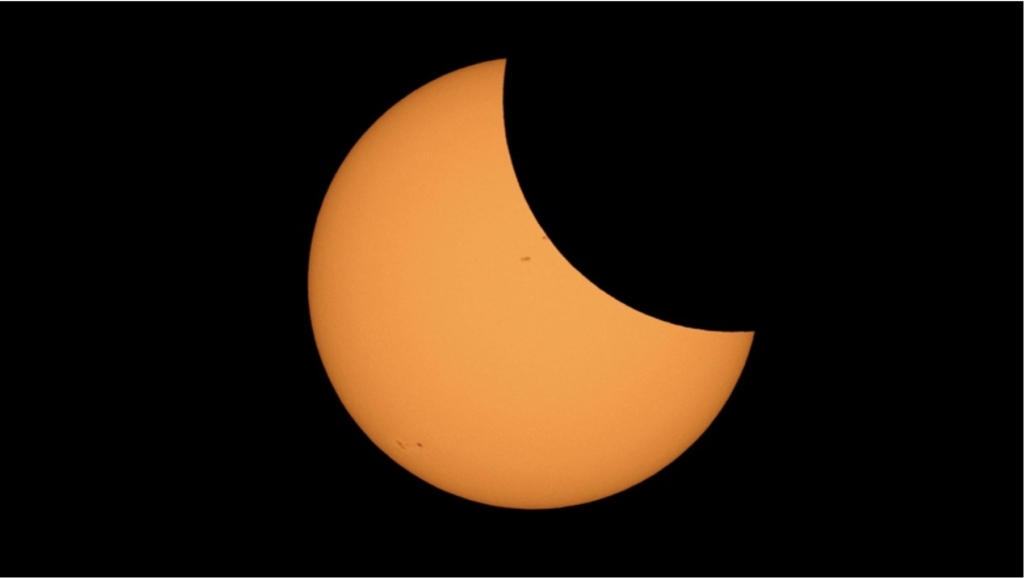
By Gus Saltonstall
Start making plans.
A total solar eclipse will pass across parts of North America, including Mexico, the United States, and Canada, on April 8.
You may have to travel to experience the full effect, as New York City is not in the “path of totality.” But New Yorkers will still be able to see the moon cover up to 90 percent of the sun. A few areas in northern New York State will experience totality.
A total solar eclipse occurs when the moon passes between, i.e. aligns with, the earth and the sun, “shielding the solar surface from our view,” wrote The New York Times. You won’t have another chance to see one until 2044.
For those who remember, the last time the United States saw a total solar eclipse was in the summer of 2017.
The American Museum of Natural History is hosting a free public program to watch the eclipse on April 8.
Weather permitting, the program will take place on the Arthur Ross Terrace and the Cullman Hall of the Universe (enter on West 81st Street and Central Park West), where experts will take visitors through the event and also provide glasses to safely view the phenomenon.
It is very important to not look directly at a total solar eclipse. You must use protective eyewear. See what The Times recommends – HERE.
The program will begin at 10 a.m., and the partial eclipse will begin at 2:10 p.m. The maximum eclipse coverage in New York City will happen at 3:25 p.m.
According to The Times, “As the eclipse approaches its maximum phase, the air will get cooler, the sky will grow dimmer, shadows will sharpen and you might notice images of crescents — tiny projections of the eclipse — within them. Along the path of totality, the world will go dark while the moon inches toward perfect alignment with Earth and the sun….Viewers in locations away from the eclipse path will see the moon partially blot out the sun, though how perceptible the effects are depends on the site’s distance from the centerline. (The closer you are, the more remarkable it will be.) Still, it won’t be quite like experiencing the eclipse during totality.” (Even during a partial eclipse you need protective eyewear.)
The American Museum of Natural History also created an extremely informative video on what takes place during a total solar eclipse.
Subscribe to West Side Rag’s FREE email newsletter here.









So the city will get darker?
This link (Eclipse 2024.org: Manhattan, NY) simulates what it will be like in Manhattan. Drag the slider at the very bottom to the middle. Sadly, 90% will be pretty tame relative to being in the totality path.
But, as consolation – instead of ordering protective eyewhere online, just go to the AMNH’s gift shop in the planetarium. You can buy solar glasses for $3 each. While I don’t know if you can just walk in, make a reservation online as a city resident and pay as little as you wish.
Thanks. More information added.
Not just a few areas but about half of upstate New York will see totality. If you watch at the museum you’re not gonna see that.
It’s so difficult to relate the emotional reaction people have during a total solar eclipse. Thanks for sharing the video that gives great information but also a sense of the excitement and emotional impact of those few minutes.
If lucky enough to be on centerline, it is safe to look at the eclipse during totality. Some recommend setting an alarm for the time totality ends, a warning to put protective eyewear and camera filters back on just prior to the return of the sun’s light.
One last thing, the 2044 event is the next total solar eclipse to cross a part of the US; the next total solar eclipse after April 8 is on August 12, 2026.
Wondering what the actual impact (if any) there will be in the City, given that we’re not in the path of totality. Still, it could be an interesting and informative science day.
— “…the program will take place on the Arthur Ross Terrace and the Cullman Hall of the Universe…” at the Museum.
I’m surprised the Museum hasn’t taken the opportunity to raise more funds by offering to name the eclipse after some wealthy contributor. Everything else connected with the Museum these days seems to be named after someone. Just think: It could be the “Aloysius Poindexter Family Trust solar eclipse”!
(Apologies to a real Aloysius Poindexter if there is one out there.)
Buffalo/Niagara Falls will have the best views in the US with a total eclipse for the longest time.
We rented a house in Buffalo where there will be 3:43.07 of totality. Just hoping for good weather now.